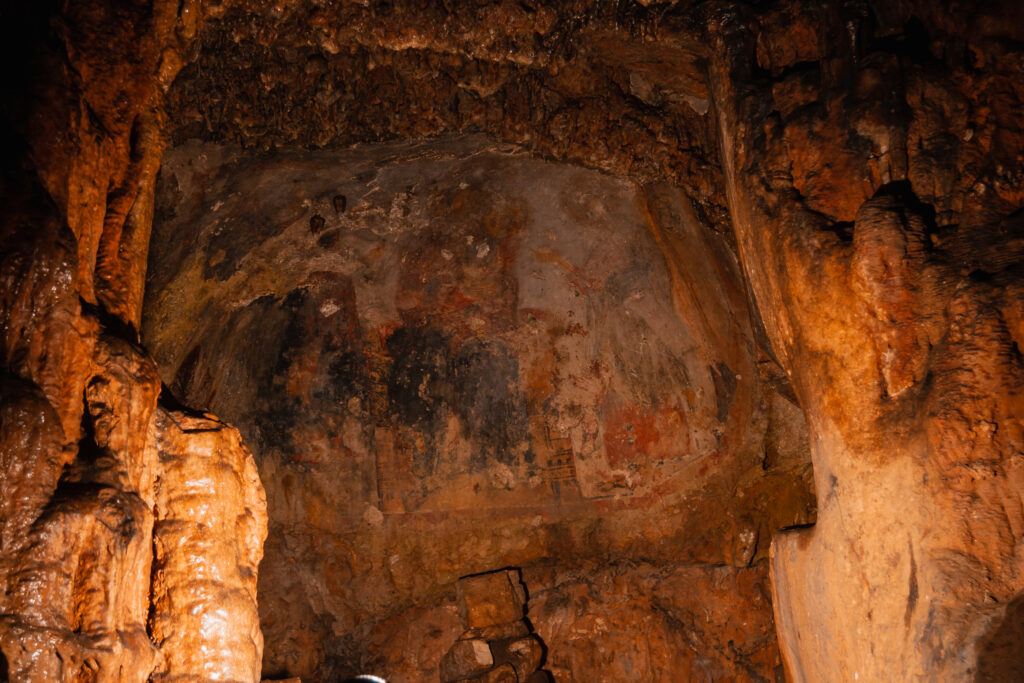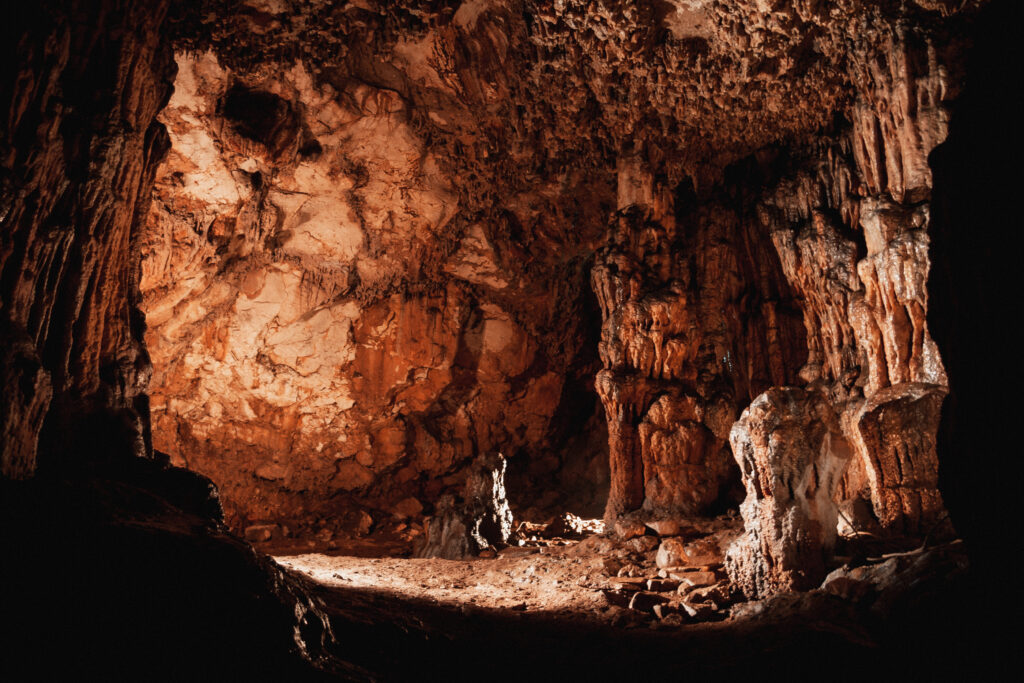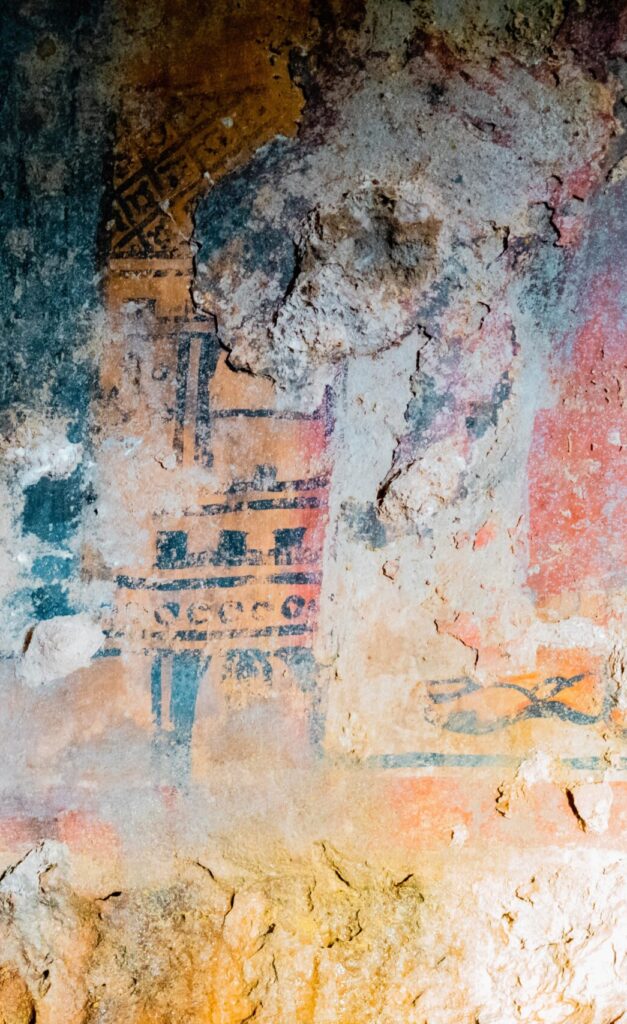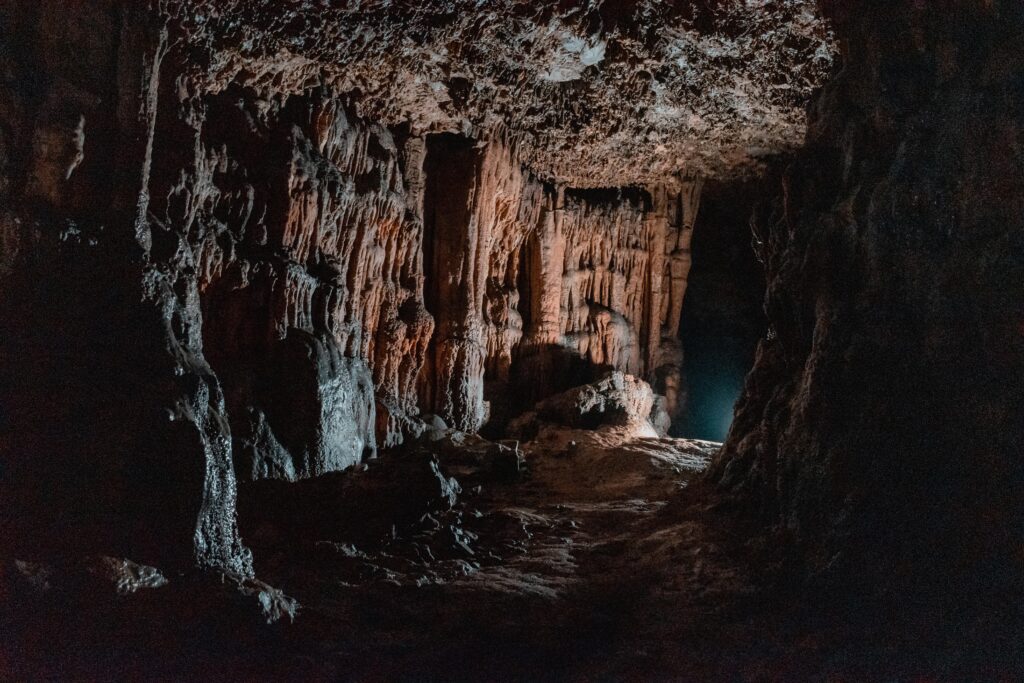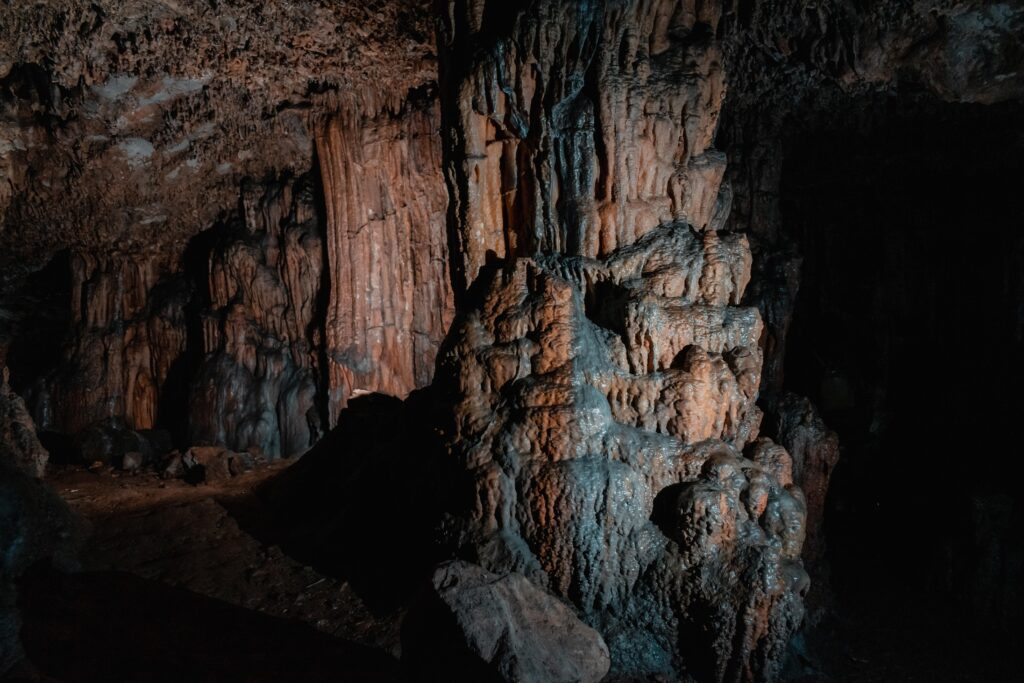The Cave
The Grotta di Sant’Angelo
A crossroads of history, faith
and culture
Among ancient sheep-tracks and along the historic Bari-Matera road, stands the Grotta di Sant’Angelo in Santeramo. For centuries, this symbolic route of transhumance has seen the passage of pilgrims, shepherds and cattle, giving rise to structures that still tell stories of devotion.
In an area almost devoid of springs, the presence of water in the grotto appeared like a divine miracle. The trickling water, collected in natural pools and ponds, was considered miraculous and was used in ablution rituals. Pilgrims flocked to touch the sacred walls and say prayers such as ‘Memento Domine’ and ‘remember me Lord’, leaving an indelible sign of their faith.
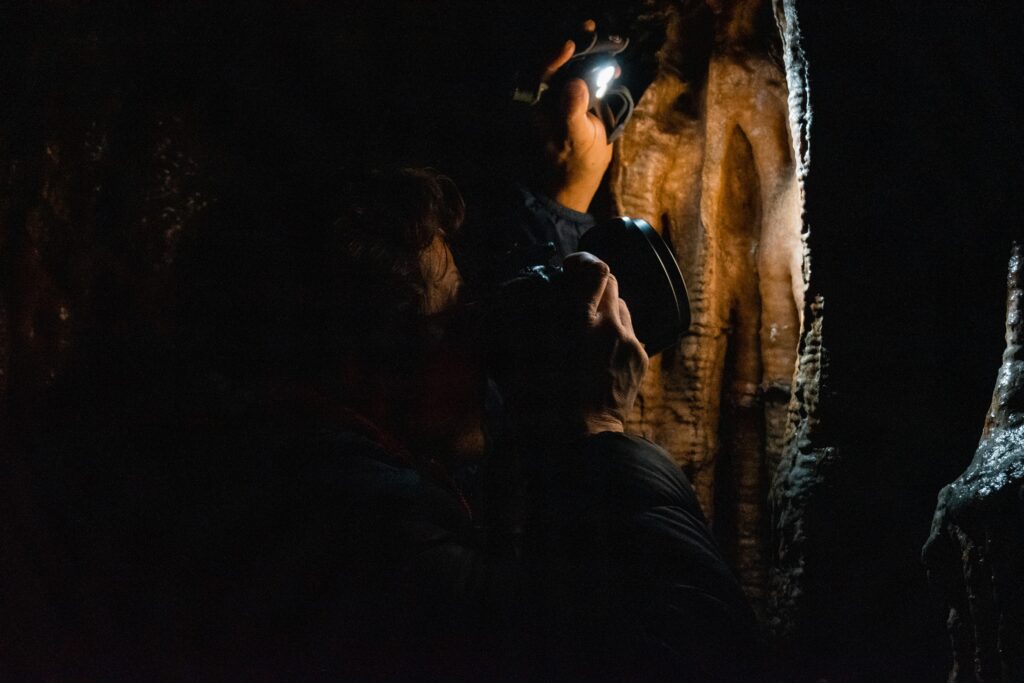
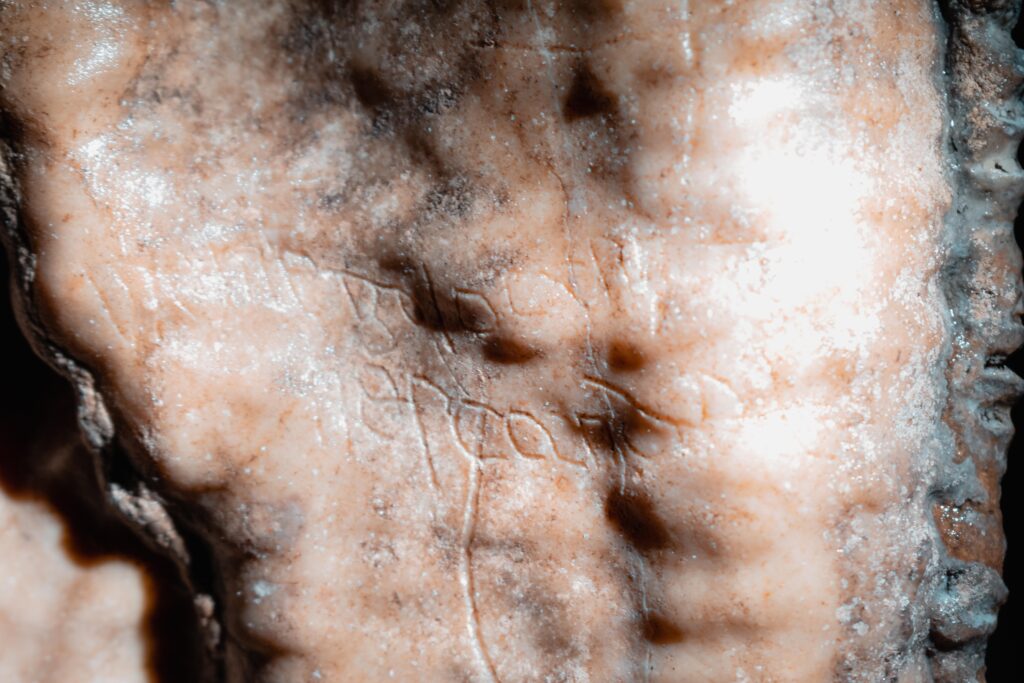
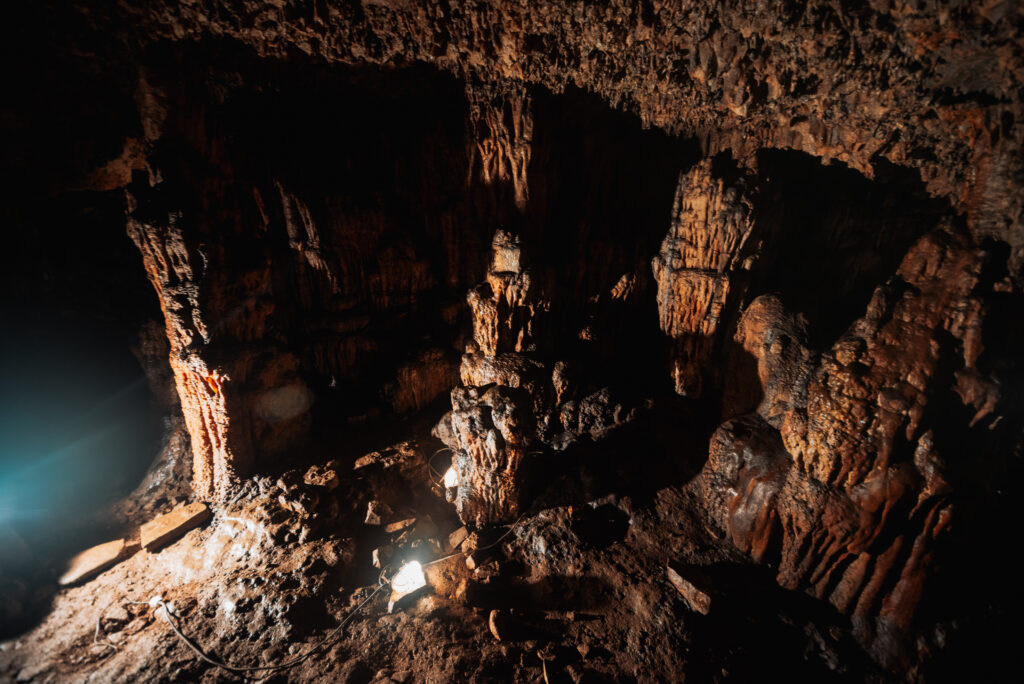
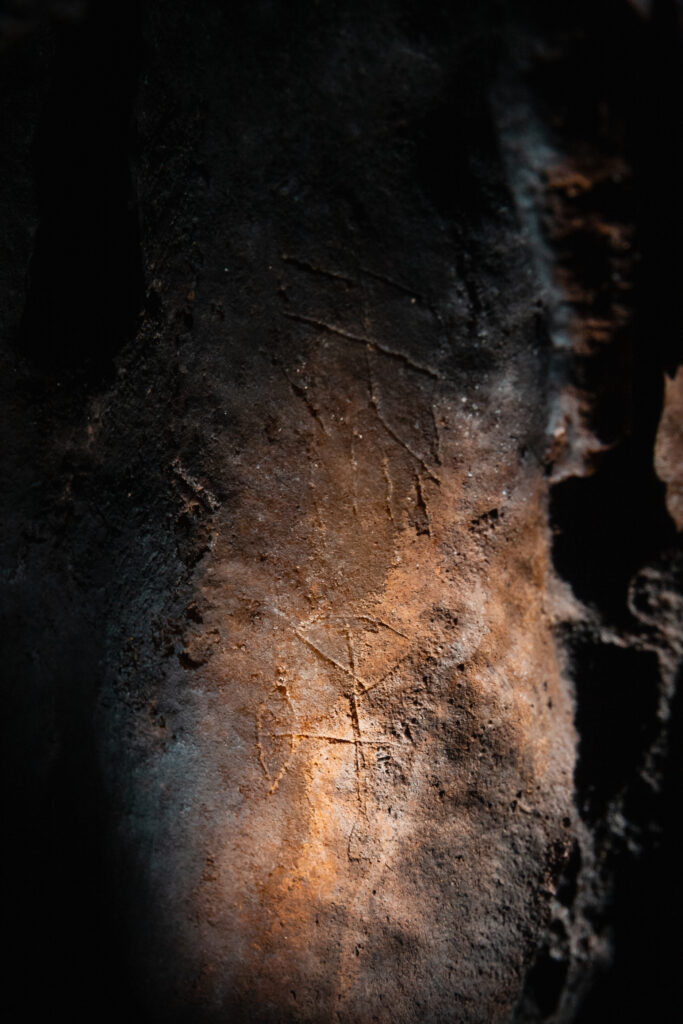
The Grotta di Sant’Angelo
Architecture and sacredness
Numerous buildings were erected around the cave to accommodate those travelling along the sheep-tracks. Among them, a cell on the south-eastern side protected the entrance to the sacred cavity. The church of Sant’Angelo, dating back to the mid-12th century, with its bicellular floor plan and axial dome, bears witness to the culmination of the micaelico cult at the site. The alterations made to the entrances and the paving of the interior paths enhanced its mystical value.
The Grotta di Sant’Angelo
Testimonies and Legacy
of a Sanctuary
A fascinating inscription dates back to the 15th century: ‘Schivami dai mali me a nome Bella Bella’. The humanistic characters suggest that a courtesan from great cities like Rome, Naples or Venice left her testimony, marking the last passage of pilgrims to this shrine.
With the foundation of Altamura in 1236, the old tratturo Bari-Matera lost its importance, leading to the decline of the area and the ruin of the church above the cave. Today, only the foundations and a few architectural elements remain, but the name Sant’Angelo and the carvings on the walls continue to bear witness to the light of faith that has spanned the centuries.
